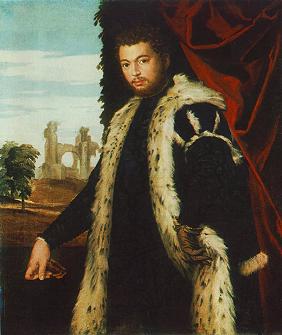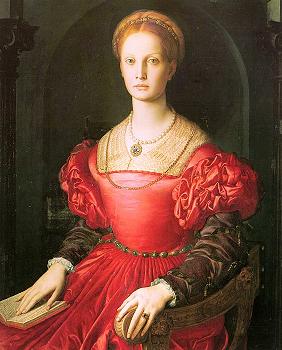
 |
Glenn Everett has posted an excellent study of the dramatic monologue on The Victorian Web. Please take a look at this overview page. Then come back here. Clicking on the links in this paragraph will open a new window on your web browser, so you won't lose contact with this page.
According to Everett, Browning's monologues have three different requirements:
If you can make the final leap of imagination, you can achieve Everett's first requirement and put yourself on the other side of the phone line and become the listener. This ability is what Samuel Taylor Coleridge, in his Lectures on Shakespeare, calls "the willing suspension of disbelief." Coleridge was referring to drama; that imaginative leap is what makes the dramatic monologue dramatic. The experience can have a sense of immediacy; a "you are there" feeling, rather like we saw in Coleridge's own conversation poems..
This listener in a dramatic monologue is not always completely silent--at times the main speaker will respond to something that the listener says. For instance, the Duke of Ferrara is clearly answering a direct question in "My Last Duchess" when he says "not the first/Are you to turn and ask thus" (12-13). And he is obviously requesting, and getting, a reponse in lines 47-48: "Will't please you rise? [the listener responds here in the affirmative.] We'll meet/The company below, then."
Because we need to fill in these gaps, it's very important that we figure out a few basic things about the situation. The basic questions one should ask oneself are
Sometimes the answers to these questions will be obvious, but sometimes you will have to be very much on the alert in order to pick up the answers. At other times the answer will be a little bit ambiguous and you will have to create your own picture. But if you don't create a picture you will not "get" the poem. Remember these are dramatic poems, so the setting is important: if you don't have a clear image of where the action is going on, you will be in the position of someone who buys a theater ticket and discovers that it corresponds to a seat behind a pillar that obscures the view of the stage. You can still get the general idea of what's happening, but you miss a lot of the meaning.
Let's go through these questions very quickly for "My Last Duchess."
I picture him as looking rather like the anonymous gentleman to the right, who
was painted by the Venetian artist Paolo Veronese around 1560, almost exactly
contemporary with the year in which this conversation is supposed to have taken
place. He's still rather young, and is likely to be thinking about an heir for
his title. Yet he's still very aware of his position and consequence in life.
Look at that arrogant face and the powerful, proprietary stance. His gloved left
hand looks like it's frozen in a clawlike clutch. The fanciful image of the ruins
outside the window adds a classical touch to show
that he is a man of taste and distinction, in the same way that the Duke of
Ferrara shows his taste by choosing the best painters and the most prestigious
sculptors for works in his collection.
The
mention of "your master" and "dowry" shows that he has been addressing someone who
is acting as agent for a wealthy Count--and that the Count's daughter is a candidate
for being Ferrara's next duchess. It also shows us that, for all his protestations,
the Duke is very interested in the Count's wealth and he intends to ask for a substantial dowry
to accompany his new bride, which he considers a "just" request from someone of his high social standing.
Note: If you don't know what the words "munificence" and "dowry" mean, look them up in a dictionary
or you'll be wholly confused.
What kind of a room are they in? This is important, because the way you view the
room is going to affect the way you view the effect of what the Duke is saying.
For instance...
Do you think it's in a prominent part of the house, such as at the head of a major staircase?
Do you think it's in a sitting room or study?
Do you think it's in the Duke's bedroom?
Click on the appropriate link to see how your choice affects the meaning of the poem.
For pictures of what the Duke of Ferrara's palace actually looked like,
click here. Please note, though, that the
Duke Alfonso under discussion here is Alfonso I. The character on whom the poem is based was his grandson,
Alfonso II. It's a little confusing in that both men married a woman named Lucrezia, but Alfonso I's wife (and
Alfonso II's grandmother) was Lucrezia Borgia... who, being a notorious member of Florence's leading crime
family, was very well able to look after herself and a very different
type of person from the innocent young Lucrezia de' Medici!
Disclaimer: The portrait I've used here is not actually of Lucrezia de' Medici, as I couldn't find any pictures
of her, either. But it's from the same date and geographical area and looks very much as I imagine she must have appeared.
Return to the page about "My Last Duchess"

Paolo Veronese, 1560Browning makes this one easy for us. He tells us
up front that the speaker is "Ferrara." What do you imagine Ferrara looks like?
Is he young? Old? Middle-aged?
Not so easy! In fact, you can't pick
up on this one the first time you read the poem. The necessary hint isn't given
until lines 49-51, where Ferrara says "The Count your master's known munificence/Is
ample warrant that no just pretence/Of mine for dowry will be disallowed..."
"Will't please you rise?" implies
that the speaker and his listener are sitting down. But where are they sitting?
On a bench, next to one another? In separate chairs? The more space they have
between them, the more "personal space" they will have. How would the impact of
the Duke's words change if he were talking to someone right beside him on a bench,
with their eyes looking in the same direction, versus talking to someone in a chair
across the room, turned so that the two chairs are facing each other? Have you got
a clear picture in your head of their positions relative to one another?
 Do you think the portrait of the Duchess is hanging in a gallery?
Do you think the portrait of the Duchess is hanging in a gallery?